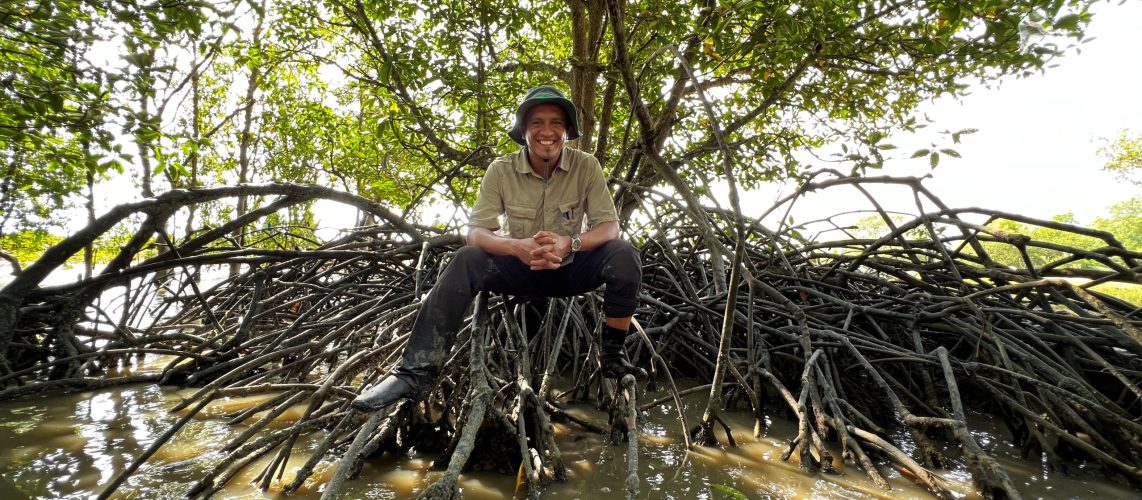This article has been published in the New Straits Times on 26th May 2018.
MANGROVES and seagrasses possess distinctive characteristics with remarkable adaptation features, allowing them to naturally occupy Malaysia’s fragile tropical coastlines. Their presence is significant in terms of providing multiple benefits and ecosystem services to the nation, particularly for coastal protection against oceanic and climatic catastrophes, and securing the livelihoods of coastal communities.
Mangroves are a natural habitat for a diverse type of plant and are home to myriads of animals and marine fauna. They are the breeding and spawning grounds for marine and coral fishes, a sanctuary for over a thousand known species of molluscs, bivalves, reptiles, amphibians, fish, birds and mammals. This includes dolphins, otters, crocodiles and mudskippers.
Malaysia’s mangroves store 90 per cent of all known and described Indo-West Pacific’s mangrove plant species, making it the third largest mangrove-holding nation in the world. Adjacent to the mangroves, particularly on the eastern and southern coasts of Peninsular Malaysia, as well as on the coasts of Sabah and Sarawak, lie numerous beds and meadows of seagrasses.
All 14 species of seagrasses found in Malaysia are well-adapted to highly saline conditions and they are the specific grazing grounds for dugongs and other marine mammals and creatures. Seagrasses provide the ecological link and habitat connectivity, particularly on nutrient exchange and dynamics with the neighbouring mangroves and coral reefs.
One important thing in common for both mangroves and seagrasses is that they are identified as an efficient carbon sequester. Hence, together with saltmarshes (commonly found in subtropical coastlines), mangroves and seagrasses are known as the blue carbon ecosystems. Particularly for mangroves, they are found to be four-times a better carbon storage compared to their terrestrial counterparts. Through photosynthesis (a process in which plant uses light, water and carbon dioxide to generate food and energy for growth, releasing oxygen as a waste product), mangroves and seagrasses fix a significant amount of atmospheric carbon by storing it in their above-ground bodies, and in their roots and soil underneath.
This process of carbon sequestration is vital to assist in our combat against climate change.
Considering all of the benefits and services provided by these ecosystems, it is unfortunate to note that mangroves and seagrasses are not legally protected. They fall in the loopholes of natural resource governance, partly due to their habitat locations, and partly due to our ignorance in recognising their ecological importance.
The National Forestry Act provides protection for mangroves within the gazetted forest reserves. However, approximately 1,000 sq km of mangroves are not (yet) gazetted and are put solely under the jurisdiction of the state governments.
Similarly, the National Fisheries Act does not include mangroves in the protection and enforcement, although it is a known fact that fish and seafood resources are highly dependent on mangroves for their survival.
Seagrasses, on the other hand, are totally not covered by the two important legal tools, except for the ones located within the boundaries of the marine parks, in which coral reefs are the main emphasis. This is a worrying scenario.
In the nation’s plight to protect our coasts from being eroded due to obvious climatic factors, human development continues to encroach on these habitats without careful consideration.
Land reclamation, urban expansion and coastal development are identified as the primary anthropogenic factors contributing to the loss and the degradation of our mangroves and seagrasses. Coupled with the extreme climatic conditions, the future of Malaysia’s mangroves and seagrasses seems vague.
It is hoped that the ongoing formulation of the National Wetlands Policy would address and solve these issues. The conservation of mangroves and seagrasses has already been mentioned in the National Policy on Biological Diversity, but, again, without a strong supporting enforcement tool like an act or a regulation, mangroves and seagrasses may still not be efficiently protected.
The Environmental Quality Act does have a provision to regulate this through the implementation of the Environmental Impact Assessment by the Department of Environment. However, many destructive coastal development went on without solid mitigation measures and monitoring. Strict enforcement of rules and regulations should control anthropogenic disturbances on these habitats.
The Forestry Department, The Department of Marine Park and The Department of Environment are already placed under the same roof, that is the Natural Resources and the Environment Ministry.
Therefore, it is hoped that the ministry is able to strengthen smart partnerships and collaborations, and to allow for flexible enforcement mechanisms in between departments in order to protect these important intertidal habitats — our mangroves and seagrasses and all their ecological significance.
The writer is senior lecturer and research fellow at the Institute for Environment and Development (Lestari), Universiti Kebangsaan Malaysia, and coordinator of the Malaysian Mangrove Research
Alliance and Network (MyMangrove)
